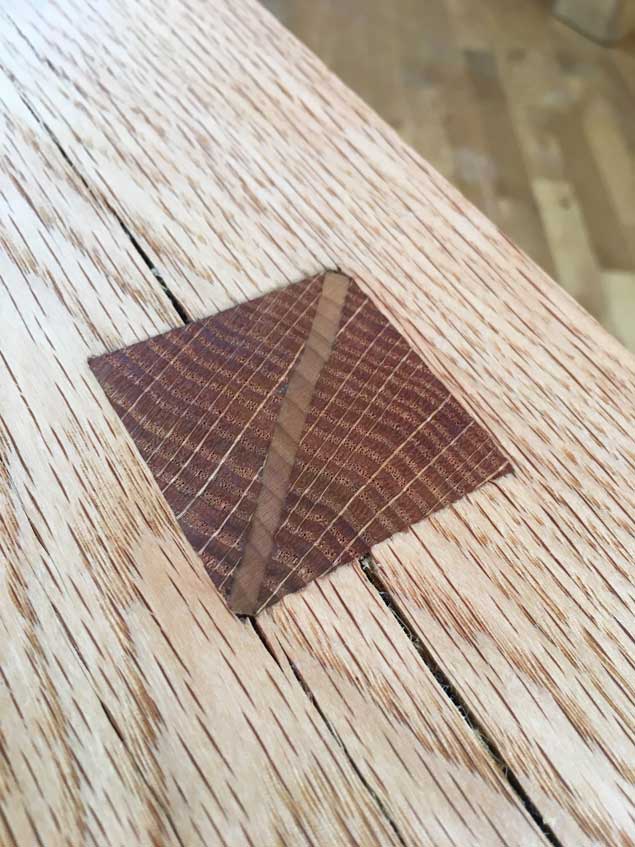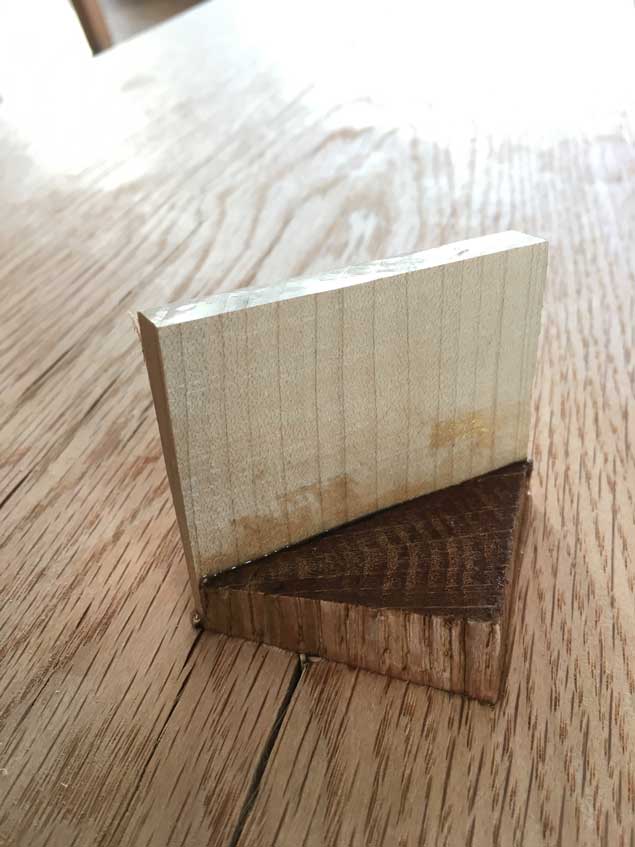We may receive a commission when you use our affiliate links. However, this does not impact our recommendations.
When wedging through-tenons, I prefer to orient the wedge diagonally across the tenon. This is a somewhat atypical way to work, so an explanation is in order.
A diagonal wedge has the advantage of closing up any gaps on all four edges of a rectangular mortise. That’s because it pushes the tenon against all four walls of the mortise. The more typical wedge, on the other hand, will push against only the end-grain walls of the mortise.
The diagonal wedge has the disadvantage of splitting the mortise and ruining the work. Pushing a tenon against the long-grain walls of a mortise is asking for trouble.
A Sharp Eye & Wedge
I haven’t split a mortise with a diagonal wedge in many years. Here are the steps I take to reduce the risk of trashing the joint.
- I saw a kerf in the tenon. For large-scale work (such as a workbench), I’ll use a handsaw with a thick kerf. For typical tenons, I use my tenon saw. For delicate stuff, I use my dovetail saw. Some people bore a hole at the bottom of the tenon to prevent the tenon from splitting. I haven’t found that necessary in a well-made joint.
- I use a thin wedge with a 4° included angle. Thin wedges with a sharp point are a good place to start. They can get into tight kerfs. You can blunt them, if necessary, by cutting off the tip. This will make them less likely to get crushed during insertion.
- After assembly but before wedging, I open the kerf with a chisel. Right before I drive the wedge I take a wide chisel and mallet it into the kerf. This deforms the mouth of the kerf, making it easier to insert the wedge.
- When driving the wedge I use consistent, sharp raps with a hammer. The trick is to watch the wedge carefully when you hit it. Each strike should make the wedge move a little into the kerf. When you hit the wedge hard and the wedge doesn’t move, it’s time to stop hitting the wedge.
The reward for these extra steps is a joint that is strong and is much less likely to have any gaps. Give it a try – on a test joint first – and I think you’ll like the results.
— Christopher Schwarz
Here are some supplies and tools we find essential in our everyday work around the shop. We may receive a commission from sales referred by our links; however, we have carefully selected these products for their usefulness and quality.












Wouldn’t it be easier to drill the hole first then saw into the hole?
OK, I’ll admit I’m confused. When you say you saw a kerf, you just mean the kerf for the wedge, correct? I thought that was pretty much required, unless some people just try to slam a think wedge right down into the end of the tenon?
The comment about some people bore a hole in the bottom of the tenon to prevent splitting – I’m not following that. Where do they bore the hole?
Thanks, just not getting my head around your comments.
This is also an excellent way to wedge hammer handles and they won’t split!